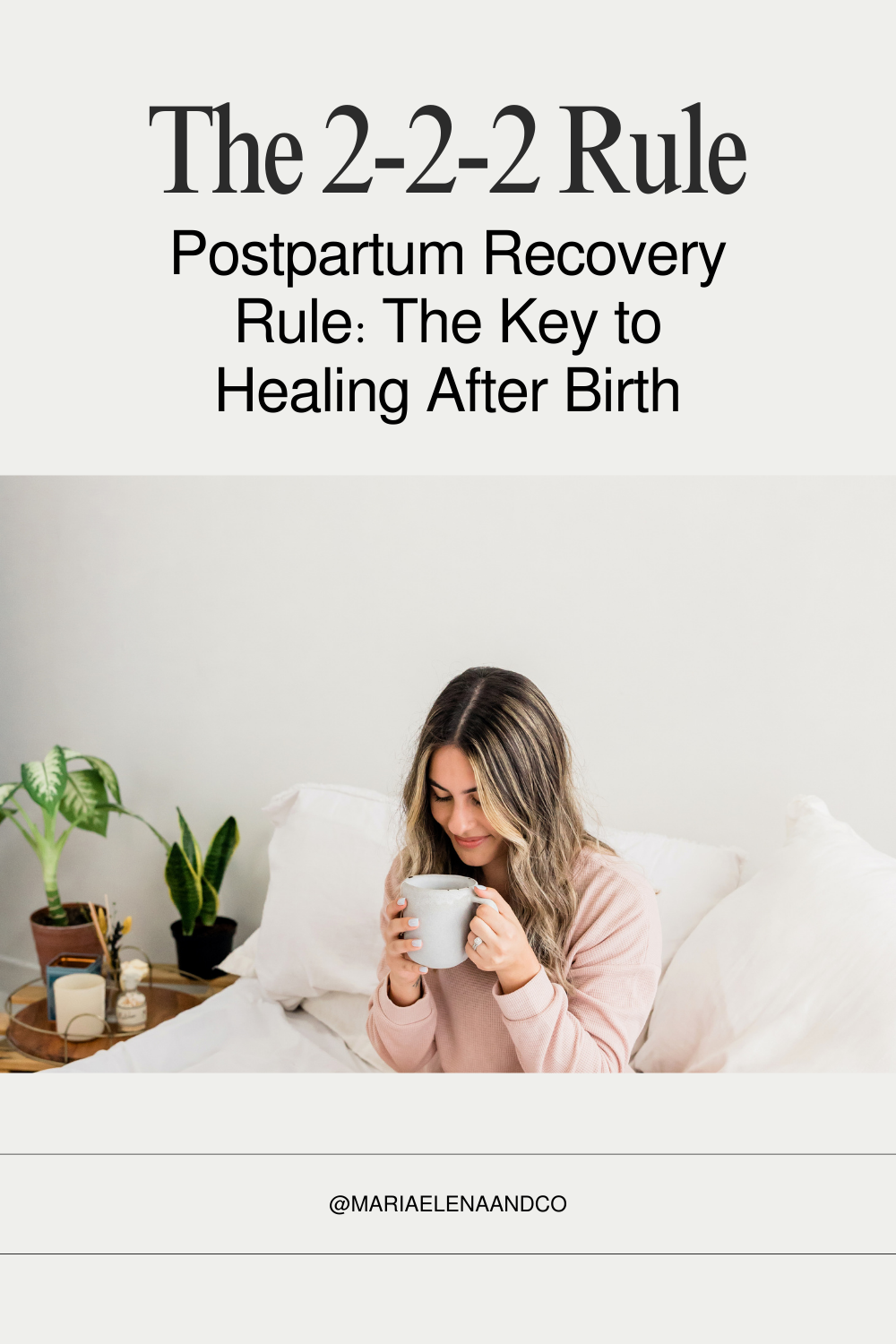The 2-2-2 Postpartum Recovery Rule: The Key to Healing After Birth
Welcoming a new baby into the world is a transformative experience, yet our culture often rushes mothers back into normal life far too soon. The 2-2-2 rule—two weeks in bed, two weeks on the bed, and two weeks near the bed—is a time-honored approach to postpartum recovery that ensures a mother’s body heals properly. But why is this crucial, and what happens when mothers push themselves too soon?
Birth Is Not Like a Broken Bone or Surgery
Many people assume birth recovery is similar to healing from a broken bone or even surgery, but the reality is far more complex. Unlike a localized injury, childbirth affects multiple systems in the body—hormonal, muscular, vascular, and even neurological.
Hormonal shifts after birth are drastic. Relaxin, the hormone responsible for loosening ligaments during pregnancy, remains in the body for weeks, making joints more vulnerable. Pushing through daily activities before the body stabilizes can lead to long-term instability and pain, especially in the pelvic floor and lower back. Studies show that postpartum women who resume intense activities too early are at a higher risk for pelvic organ prolapse, urinary incontinence, and chronic pain (Hagen & Stark, 2011).
Natural Birth vs. C-Section Recovery
Natural birth generally allows for a faster recovery, but that doesn’t mean a mother should be up and active immediately. The uterus alone takes about six weeks to shrink back to its pre-pregnancy size. Even with a straightforward vaginal birth, excessive movement in the early weeks can lead to internal tearing, excessive bleeding, and exhaustion that affects milk supply and mental well-being.
For C-section mothers, recovery is even more delicate. A Cesarean is a major abdominal surgery that requires deep tissue healing. The uterus, abdominal wall, and nerves all need time to mend. Rushing this process can increase the risk of wound infections, delayed healing, and long-term weakness in the core muscles (WHO, 2020). Ignoring the body’s need for rest may lead to complications like diastasis recti (separation of abdominal muscles) or hernias.
Why Multiple Pregnancies Require More Recovery
With each pregnancy, the body undergoes additional stretching, muscle fatigue, and depletion of essential nutrients. If a mother doesn’t prioritize rest after each birth, the cumulative stress on her body can slow recovery dramatically. Research suggests that close birth spacing without adequate postpartum recovery increases the risk of maternal depletion syndrome—leading to chronic fatigue, hair loss, bone density loss, and even postpartum depression (Wells et al., 2017).
Suggestions for the 2-2-2 Recovery Period
Many mothers struggle with the idea of staying in bed for an extended period. Here are some simple and engaging activities to make the most of each phase of the 2-2-2 recovery:
2 Weeks in Bed:
Newborn bonding and skin-to-skin contact
Learn to breastfeed while lying down
Prioritize sleep and hydration
Read a book or listen to an audiobook
Catch up on Netflix or favorite shows
Write in a journal or baby memory book
2 Weeks on the Bed:
Sit up with plenty of pillows for comfort
Try different breastfeeding positions
Read books, do crossword puzzles, or listen to podcasts
Call a friend or family member for support
Take a long bath while someone helps with the baby
Self-massage belly or neck with oil
Learn infant massage techniques
Sit near a window for fresh air and natural light
Pick up a new sitting hobby like crocheting or knitting
2 Weeks Near the Bed:
Gently walk around the bedroom
Stretch lightly and focus on breathing
Try a yoni steam for postpartum healing
Get an in-home massage or acupuncture session
Finalize a hobby project that brings joy
Stand near a window with baby for vitamin D exposure
Slowly reintroduce small household activities without strain
The Difference Between Family Help and a Postpartum Doula
Many mothers think having a family member step in is enough, but there’s a crucial difference between well-intentioned relatives and a trained postpartum doula. Family members often help with baby care or household tasks, but a doula is there specifically to nurture the mother. This includes supporting recovery, ensuring proper nourishment, teaching newborn care, and even helping with emotional well-being. A doula’s guidance can mean the difference between a slow, stressed recovery and one where the mother feels cared for and truly rested.
Prioritizing Recovery is an Investment in Long-Term Health
By following the 2-2-2 rule, mothers set themselves up for long-term health and energy. Those first six weeks are not a luxury; they are a necessity. Instead of pushing through, consider how investing in proper recovery—whether by hiring a postpartum doula or ensuring structured rest—can create a smoother transition into motherhood. After all, a well-supported mother is best equipped to care for her baby.
So, if you or someone you know is expecting, think beyond just preparing the nursery. Plan for postpartum rest as carefully as you plan for birth. Your future self will thank you.

